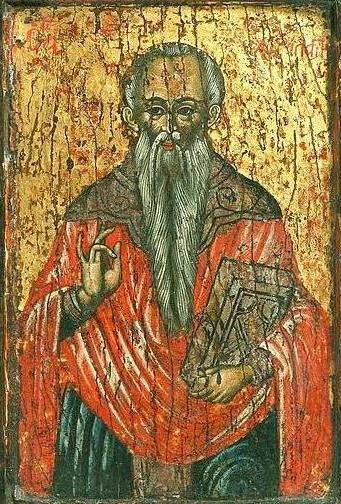For it is written that Abraham had two sons, one by a slave and one by a free woman. But the son of the slave was born according to the flesh, the son of the free woman through promise. Now this is an allegory: these women are two covenants. One is form Mount Sinai, bearing children for slavery; she is Hagar. Now Hagar is Mount Sinai in Arabia; she corresponds to the present Jerusalem, for she is in slavery with her children. But the Jerusalem above is free, and she is our mother. For it is written, “Rejoice O barren one who does not bear; break forth and shout, you who are not in travail; for the children of the desolate one are many more than the children of her that is married.”
Galatians 4: 22-27 (Epistle from the Dormition of St. Anna)
Saint Anna is the mother of the Theotokos. She was married to Joachim. They were unable to conceive a child and were blessed to give birth to the Virgin Mary in the elderly years. The Virgin Mary was living in the temple from age three, and both her parents died shortly after she was born. St. Anna is the saint invoked for conceiving children, as well as for help in time of a difficult childbirth.
The Epistle lesson, taken from St. Paul’s Letter to the Galatians, refers to the Old Testament. In the book of Genesis, we read that Abraham and his wife Sarah, were not able to conceive children. In Genesis 16, we read that Sarah (at the time called Sarai) told Abraham (at that time called Abram) that he should be with her maid, Hagar, since she could not give him children. So, Abram went with Hagar and she conceived an illegitimate son, whom she named Ishmael. It was told by an angel that Ishmael “shall be a wild ass of a man, his hand against every man and every man’s hand against him. (Genesis 16:12)
Later, after God made a covenant with Abraham, He promised that Sarah would conceive in her old age. So, now Abraham ended up with two sons, one illegitimate and one the product of his union with Sarah.
Saint Paul refers to these two sons, comparing the two women to two allegories. Hagar represents the Old Covenant, given on Mount Sinai in the Ten Commandments. This covenant gave order, just like the conception by Hagar gave Abram a son. But neither was an ending. Ishmael did not play out to a good ending and neither did the Old Covenant.
A New Covenant came through the Incarnation of Jesus Christ. The New Covenant is perfect and permanent. It has replaced the Old Covenant. Our hope is not found in keeping good order but in the sacrificial love that Christ showed to us. We are descended from Abraham, but not from the line of Ishmael but through the line of Isaac, Jacob, then to David and ultimately to Jesus.
We know that the Virgin Mary was called by God to be the Theotokos, the one who would bear the Son of God in her womb. However, before her birth, there was a miracle given to her parents, Joachim and Anna, to bring her into the world in old age, way past what would have been the normal age. Joachim and Anna stayed faithful to God especially at a time when not having children was seen as carrying a curse from God. We no longer have this understanding of not having children.
The Epistle lesson for the Dormition of the Virgin Mary is also read on December 9, the Conception of the Virgin Mary by Joachim and Anna, and on September 23, the Conception of St. John the Baptist.
You carried within your womb her who was pregnant with Life, the Mother of God, O godly-minded Anna; and thus to heaven were you today transported with great rejoicing, where those who feast dwell in glory. You pray for the forgiveness of offenses for the faithful who honor you with longing, O ever-blessed one. (Apolytikion Dormition of St. Anna, trans by Fr. Seraphim Dedes)
Without the faith of Joachim and Anna, there would have been no Virgin Mary to conceive Christ. As so often happens, we see that these sort of “bit players” in the story are actually really important. Their faith not only stands as a witness but is essential in furthering the story which would eventually lead to our salvation.
